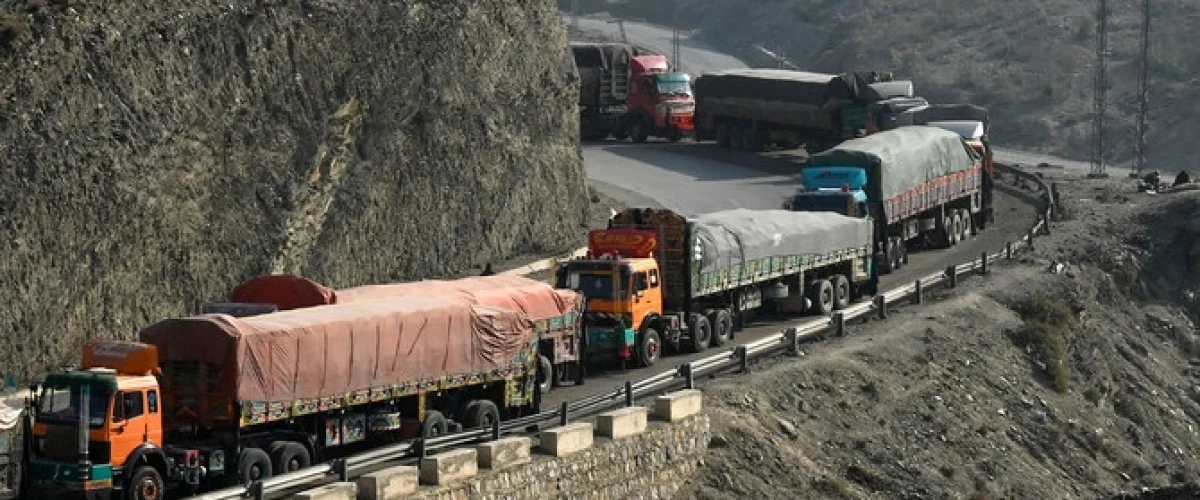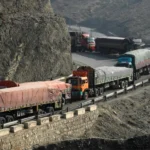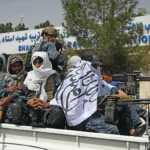When Mullah Abdul Ghani Baradar told Afghan traders recently to “end their business dealings in Pakistan,” it was framed as a moment of economic sovereignty. In reality, it reflected political frustration. The decision followed weeks of border closures this October that were not arbitrary, but responses to escalating cross-border terrorism, infiltration, and Kabul’s unwillingness to act against groups using Afghan soil to attack Pakistan.
Afghanistan’s leadership has since presented its move as a “rebalancing of trade,” accusing Islamabad of using transit routes as a political tool. That narrative has found easy traction among sympathisers. But it conceals a harder truth that Pakistan’s trade policy is rooted in security imperatives, not political whim, and Afghanistan’s attempt at economic retaliation risks backfiring more on Kabul than on Islamabad.
Trade and Geography: A Relationship Written by Terrain
Since 1947, Afghanistan’s economic lifeline has run through Pakistan. Karachi and Port Qasim handle more than half of Afghanistan’s total import volume. In FY 2024–25, bilateral trade stood at roughly US $1.5 billion, with Pakistani exports accounting for two-thirds of that figure. According to the Pakistan Business Council, Pakistan’s exports to Afghanistan were about $1.14 billion in 2024, while imports stood near $658.7 million.
Pakistan’s border trade alone contributes nearly PKR 50 million daily in customs revenue at key gates, while Afghanistan depends on those same crossings for over half of its state revenue. The World Bank estimates that in the first eight months of FY 2024–25, Afghan customs collections touched AFN 41.4 billion (≈ US $1.6 billion), the largest single source of its treasury income. Every day the border stays closed, Kabul loses critical revenue and foreign-exchange inflows.
For Pakistan, Afghanistan is not merely a trading partner but the logical overland route to Central Asia. It is indeed a bridge envisioned under the second phase of the China-Pakistan Economic Corridor. However, for Afghanistan, Pakistan is access to the sea, to affordability, and to continuity. Geography gave both interdependences, but politics has made it complicated.
Why the October Closures Happened
The October 2025 restrictions were triggered by a pattern, not an incident. Intelligence assessments pointed to a surge in TTP infiltration from Kunar, Paktika, and Nangarhar. After multiple warnings to Kabul to curb these movements, Islamabad restricted border crossings and suspended several categories of transit cargo.
The intent was not punitive; it was deterrent to make clear that trade facilitation cannot exist in a vacuum of security cooperation. For Pakistan, the principle is straightforward, which is, sovereignty first, commerce second. When cross-border attacks rise, normal trade cannot continue as if nothing has changed. No serious state separates its economic and security interests. Pakistan is no exception.
The immediate disruption, however, was costly. Within the first few days of closures and restrictions at Torkham, Chaman, and Kharlachi, both countries together lost an estimated $60 – 100 million in halted trade and logistics costs. Estimates suggest potential losses from a one-month Torkham closure at about $72 million. Hundreds of trucks were stranded, perishable goods spoiled, and traders paid heavy demurrage on idle cargo. For border towns like Chaman, Spin Boldak, and Ghulam Khan, this is not abstraction, it’s their daily income gone.
Afghanistan’s Economic Math Doesn’t Add Up
Kabul’s call for traders to “shift imports to alternative countries” sounds bold, until the calculator comes out.
The Lapis Lazuli Corridor, linking Afghanistan to Europe through Turkmenistan and the Caucasus, remains half-operational and cost-intensive. Transporting goods via that route costs nearly 40 percent more and doubles delivery time compared to Karachi.
The Iranian route via Islam Qala–Dogharoun leads to Bandar Abbas and Chabahar, while Hairatan and Aqina connect Afghanistan to Uzbekistan and Turkmenistan. But both corridors are slower, bureaucratic, and vulnerable to sanctions or seasonal disruption. In just the first half of 2025, bilateral trade between Pakistan and Afghanistan already neared $1 billion, Pakistan’s exports $712 million, Afghan exports $277 million. That scale cannot be replicated westward anytime soon.
For an import-driven economy where over 70 percent of goods are imported, such diversification is not strategy; it is self-harm disguised as nationalism.
Pakistan’s Leverage Is Structural, Not Tactical
Afghanistan can diversify rhetoric; it cannot diversify geography. Pakistan remains the only country with both deep-sea ports and contiguous land routes capable of handling Afghan volume. Even China’s western trade corridors rely on Pakistani gateways.
Islamabad’s real leverage is not border closure but comparative advantage, cheaper, faster, and familiar trade. It does not need coercion; it needs to keep its corridors efficient and predictable. If Kabul wants to trade, the shortest way still runs through Khyber.
Yet Pakistan must manage that leverage with foresight. The goal is not to punish Afghan traders but to signal that privileges come with responsibility. The more predictable and rules-based Pakistan’s transit regime becomes, the harder it will be for Kabul to politicise it.
Briefly, Pakistan bleeds tactically, Afghanistan bleeds strategically. For Islamabad, it’s a logistical headache and a diplomatic test. For Kabul, it’s a hit to fiscal stability and credibility.
Is Pakistan Pushing the Taliban Toward India?
Some analysts warn that Pakistan’s firmness risks driving the Taliban closer to India. Realistically, Delhi cannot replace Islamabad’s geography. It can offer funds, optics, and selective political cover, but not a corridor.
Still, perception matters. Each time the border closes, India gains a propaganda opening to project Pakistan as “unreliable” and to insert itself as a diplomatic counterweight, a narrative the United States quietly encourages as it eyes alternate supply chains into Central Asia.
Pakistan’s task is to pair firmness with clarity. Make it evident that security enforcement is not hostility, and that Pakistan’s intent is stability, not subjugation. Diplomacy works best when backed by consistency, not emotional cycles of shutdowns and reopenings.
If Kabul Defies, What Then?
If the Taliban leadership continues to reject Pakistan’s security conditionalities, Islamabad still has options, none requiring escalation.
It can renegotiate APTTA with digital tracking and conditional access tied to counter-terror performance. It can develop facilitation zones near Torkham and Chaman, keeping trade flowing under stricter oversight. And it must accelerate CPEC’s northern extensions toward Xinjiang and Central Asia, reducing reliance on Afghan goodwill.
Notably, CPEC’s integration with the Quadrilateral Traffic in Transit Agreement (QTTA), linking Pakistan, China, Kazakhstan and Kyrgyzstan, offers an alternate corridor into Central Asia that bypasses Afghanistan altogether. Similarly, the Gwadar–Turbat–Mashkel alignment now under study can connect directly with Iran’s transit grid. These projects underline a critical shift. Pakistan seeks cooperation with Kabul, not dependence on it.
Even now, economic gravity favours Pakistan. Afghan traders themselves are likely to press the Taliban to normalise routes that sustain their livelihoods, because it’s not just about trucks, it’s about families whose incomes are parked at the gate.
A Realistic Course Correction
Pakistan’s Afghan policy must evolve from reaction to strategy. It should balance pressure with predictability, securing borders while keeping trade transparent. Pakistan gains nothing from perpetual closures; it gains leverage when Afghanistan understands both the cost of non-cooperation and the reward of compliance.
Afghanistan, meanwhile, must confront the limits of its defiance. The illusion of independence will fade when trucks stop moving and prices start climbing. Flour, fuel, cement, and medicine are already spiking in Afghan markets, while Pakistan faces only short-term shortages of dry fruits and produce, a reminder that Pakistan’s pain is temporary, Afghanistan’s systemic.
The Road Ahead
In South Asia, commerce and conflict have always travelled together. Pakistan’s current firmness is not arrogance; it’s realism shaped by experience. Afghanistan can engage pragmatically or drift toward those who will use it as leverage against Pakistan, and discard it when convenient.
Baradar’s declaration may rally nationalist sentiment, but the arithmetic of trade does not bend to rhetoric. Pakistan’s ports will still be there; Afghanistan’s alternatives will still be expensive; and realism, not resentment, will decide who crosses which border.







